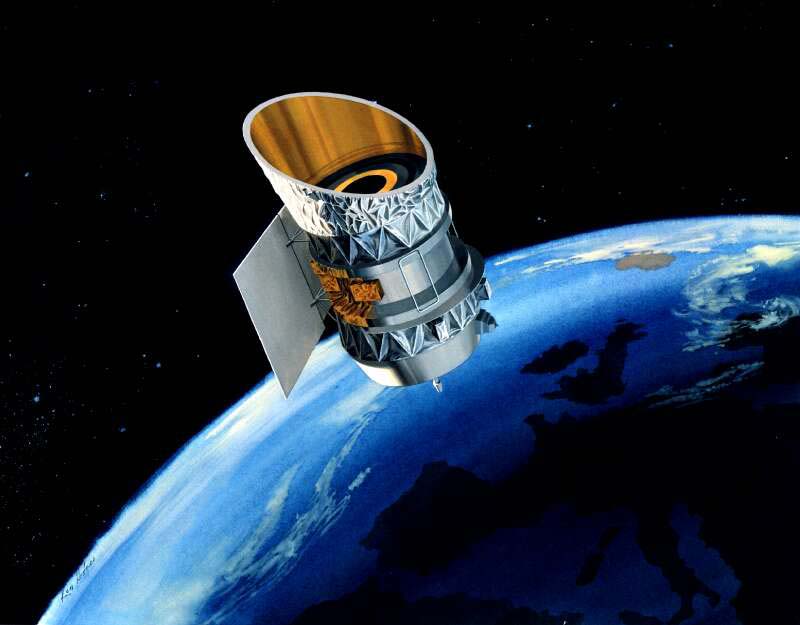|
TX Camelopardalis
TX Camelopardalis (abbreviated TX Cam) is a Mira-type variable star in the constellation Camelopardalis Camelopardalis is a large but faint constellation of the northern sky representing a giraffe. The constellation was introduced in 1612 or 1613 by Petrus Plancius. Some older astronomy books give Camelopardalus or Camelopardus as alternative for .... It is a classical long period variable star with pulsational period of 558.7 days. Water masers have been observed around the star. References Camelopardalis (constellation) Mira variables Camelopardalis, TX M-type giants {{var-star-stub ... [...More Info...] [...Related Items...] OR: [Wikipedia] [Google] [Baidu] |
Mira Variable
Mira variables (named for the prototype star Mira) are a class of pulsating stars characterized by very red colours, pulsation periods longer than 100 days, and amplitudes greater than one magnitude in infrared and 2.5 magnitude at visual wavelengths. They are red giants in the very late stages of stellar evolution, on the asymptotic giant branch (AGB), that will expel their outer envelopes as planetary nebulae and become white dwarfs within a few million years. Mira variables are stars massive enough that they have undergone helium fusion in their cores but are less than two solar masses, stars that have already lost about half their initial mass. However, they can be thousands of times more luminous than the Sun due to their very large distended envelopes. They are pulsating due to the entire star expanding and contracting. This produces a change in temperature along with radius, both of which factors cause the variation in luminosity. The pulsation depends on the mass and ... [...More Info...] [...Related Items...] OR: [Wikipedia] [Google] [Baidu] |
Mira Variables
Mira variables (named for the prototype star Mira) are a class of pulsating stars characterized by very red colours, pulsation periods longer than 100 days, and amplitudes greater than one magnitude in infrared and 2.5 magnitude at visual wavelengths. They are red giants in the very late stages of stellar evolution, on the asymptotic giant branch (AGB), that will expel their outer envelopes as planetary nebulae and become white dwarfs within a few million years. Mira variables are stars massive enough that they have undergone helium fusion in their cores but are less than two solar masses, stars that have already lost about half their initial mass. However, they can be thousands of times more luminous than the Sun due to their very large distended envelopes. They are pulsating due to the entire star expanding and contracting. This produces a change in temperature along with radius, both of which factors cause the variation in luminosity. The pulsation depends on the ma ... [...More Info...] [...Related Items...] OR: [Wikipedia] [Google] [Baidu] |
The Astrophysical Journal
''The Astrophysical Journal'', often abbreviated ''ApJ'' (pronounced "ap jay") in references and speech, is a peer-reviewed Peer review is the evaluation of work by one or more people with similar competencies as the producers of the work (peers). It functions as a form of self-regulation by qualified members of a profession within the relevant field. Peer review ... scientific journal of astrophysics and astronomy, established in 1895 by American astronomers George Ellery Hale and James Edward Keeler. The journal discontinued its print edition and became an electronic-only journal in 2015. Since 1953 ''The Astrophysical Journal Supplement Series'' (''ApJS'') has been published in conjunction with ''The Astrophysical Journal'', with generally longer articles to supplement the material in the journal. It publishes six volumes per year, with two 280-page issues per volume. ''The Astrophysical Journal Letters'' (''ApJL''), established in 1967 by Subrahmanyan Chandrasekhar as ... [...More Info...] [...Related Items...] OR: [Wikipedia] [Google] [Baidu] |
Astrophysical Maser
An astrophysical maser is a naturally occurring source of stimulated spectral line emission, typically in the microwave portion of the electromagnetic spectrum. This emission may arise in molecular clouds, comets, planetary atmospheres, stellar atmospheres, or various other conditions in interstellar space. Background Discrete transition energy Like a laser, the emission from a maser is stimulated (or ''seeded'') and monochromatic, having the frequency corresponding to the energy difference between two quantum-mechanical energy levels of the species in the gain medium which have been pumped into a non-thermal population distribution. However, naturally occurring masers lack the resonant cavity engineered for terrestrial laboratory masers. The emission from an astrophysical maser is due to a single pass through the gain medium and therefore generally lacks the spatial coherence and mode purity expected from a laboratory maser. Nomenclature Due to the differences between en ... [...More Info...] [...Related Items...] OR: [Wikipedia] [Google] [Baidu] |
OH Masers
The hydroxyl radical is the diatomic molecule . The hydroxyl radical is very stable as a dilute gas, but it decays very rapidly in the condensed phase. It is pervasive in some situations. Most notably the hydroxyl radicals are produced from the decomposition of hydroperoxides (ROOH) or, in atmospheric chemistry, by the reaction of excited atomic oxygen with water. It is also important in the field of radiation chemistry, since it leads to the formation of hydrogen peroxide and oxygen, which can enhance corrosion and SCC in coolant systems subjected to radioactive environments. In organic synthesis, hydroxyl radicals are most commonly generated by photolysis of 1-hydroxy-2(1''H'')-pyridinethione. Notation The unpaired electron of the hydroxyl radical is officially represented by a middle dot, •, beside the O. Biology Hydroxyl radicals can occasionally be produced as a byproduct of immune action. Macrophages and microglia most frequently generate this compound when exp ... [...More Info...] [...Related Items...] OR: [Wikipedia] [Google] [Baidu] |
Long Period Variable
The descriptive term long-period variable star refers to various groups of cool luminous pulsating variable stars. It is frequently abbreviated to LPV. Types of variation The General Catalogue of Variable Stars does not define a long-period variable star type, although it does describe Mira variables as long-period variables. The term was first used in the 19th century, before more precise classifications of variable stars, to refer to a group that were known to vary on timescales typically hundreds of days. By the middle of the 20th century, long period variables were known to be cool giant stars. The relationship of Mira variables, semiregular variables, and other pulsating stars was being investigated and the term ''long period variable'' was generally restricted to the coolest pulsating stars, almost all Mira variables. Semiregular variables were considered intermediate between LPVs and Cepheids. After the publication of the General Catalogue of Variable Stars, both ... [...More Info...] [...Related Items...] OR: [Wikipedia] [Google] [Baidu] |
Constellation
A constellation is an area on the celestial sphere in which a group of visible stars forms Asterism (astronomy), a perceived pattern or outline, typically representing an animal, mythological subject, or inanimate object. The origins of the earliest constellations likely go back to prehistory. People used them to relate stories of their beliefs, experiences, creation myth, creation, or mythology. Different cultures and countries adopted their own constellations, some of which lasted into the early 20th century before today's constellations were internationally recognized. The recognition of constellations has changed significantly over time. Many changed in size or shape. Some became popular, only to drop into obscurity. Some were limited to a single culture or nation. The 48 traditional Western constellations are Greek. They are given in Aratus' work ''Phenomena'' and Ptolemy's ''Almagest'', though their origin probably predates these works by several centuries. Constellation ... [...More Info...] [...Related Items...] OR: [Wikipedia] [Google] [Baidu] |
IRAS
The Infrared Astronomical Satellite (Dutch: ''Infrarood Astronomische Satelliet'') (IRAS) was the first space telescope to perform a survey of the entire night sky at infrared wavelengths. Launched on 25 January 1983, its mission lasted ten months. The telescope was a joint project of the United States (NASA), the Netherlands ( NIVR), and the United Kingdom ( SERC). Over 250,000 infrared sources were observed at 12, 25, 60, and 100 micrometer wavelengths. Support for the processing and analysis of data from IRAS was contributed from the Infrared Processing and Analysis Center at the California Institute of Technology. Currently, the Infrared Science Archive at IPAC holds the IRAS archive. The success of IRAS led to interest in the 1985 Infrared Telescope (IRT) mission on the Space Shuttle, and the planned Shuttle Infrared Telescope Facility which eventually transformed into the Space Infrared Telescope Facility, SIRTF, which in turn was developed into the Spitzer Space ... [...More Info...] [...Related Items...] OR: [Wikipedia] [Google] [Baidu] |
Photometric System
In astronomy, a photometric system is a set of well-defined passbands (or optical filters), with a known sensitivity to incident radiation. The sensitivity usually depends on the optical system, detectors and filters used. For each photometric system a set of primary standard stars is provided. A commonly adopted standardized photometric system is the Johnson-Morgan or UBV photometric system (1953). At present, there are more than 200 photometric systems. Photometric systems are usually characterized according to the widths of their passbands: * broadband (passbands wider than 30 nm, of which the most widely used is Johnson-Morgan UBV system) * intermediate band (passbands between 10 and 30 nm wide) * narrow band (passbands less than 10 nm wide) Photometric letters Each letter designates a section of light of the electromagnetic spectrum; these cover well the consecutive major groups, near-ultraviolet (NUV), visible light (centered on the V band), near-infrared ... [...More Info...] [...Related Items...] OR: [Wikipedia] [Google] [Baidu] |
Variable Star Designation
In astronomy, a variable star designation is a unique identifier given to variable stars. It uses a variation on the Bayer designation format, with an identifying label (as described below) preceding the Latin genitive of the name of the constellation in which the star lies. See List of constellations for a list of constellations and the genitive forms of their names. The identifying label can be one or two Latin letters or a ''V'' plus a number (e.g. V399). Examples are R Coronae Borealis, YZ Ceti, V603 Aquilae. Naming The current naming system is: *Stars with existing Greek letter Bayer designations are not given new designations. *Otherwise, start with the letter R and go through Z. *Continue with RR...RZ, then use SS...SZ, TT...TZ and so on until ZZ. *Use AA...AZ, BB...BZ, CC...CZ and so on until reaching QZ, omitting J in both the first and second positions.Most of this system was invented in Germany, which was still on Fraktur at the time, in which the majuscules "I" and ... [...More Info...] [...Related Items...] OR: [Wikipedia] [Google] [Baidu] |
Astrophysical Journal Letters
''The Astrophysical Journal'', often abbreviated ''ApJ'' (pronounced "ap jay") in references and speech, is a Peer review, peer-reviewed scientific journal of astrophysics and astronomy, established in 1895 by American astronomers George Ellery Hale and James Edward Keeler. The journal discontinued its print edition and became an electronic-only journal in 2015. Since 1953 ''The Astrophysical Journal Supplement Series'' (''ApJS'') has been published in conjunction with ''The Astrophysical Journal'', with generally longer articles to supplement the material in the journal. It publishes six volumes per year, with two 280-page issues per volume. ''The Astrophysical Journal Letters'' (''ApJL''), established in 1967 by Subrahmanyan Chandrasekhar as Part 2 of ''The Astrophysical Journal'', is now a separate journal focusing on the rapid publication of high-impact astronomical research. The three journals were published by the University of Chicago Press for the American Astronomical S ... [...More Info...] [...Related Items...] OR: [Wikipedia] [Google] [Baidu] |






